Collectively, these golf courses have contributed to the development of every facet of the game Down Under.
We love them for their beauty, strategy and challenge, and at Australian Golf Digest we have celebrated them for greatness, for value and multiple other attributes, but have our golf courses been agents of change?
In many ways, yes; both overt and subtle. Domestic and foreign influences have shaped the many and varied arenas on which we enjoy the game here. While Australian Golf Digest is turning 50, we acknowledge that the most significant impacts on golf courses stem back far longer ago, so for this collection of our most important courses, we’re looking all the way back to the start of the game here.
Neil Crafter, the acclaimed Australian amateur golfer-turned course architect, says much credit for the high calibre of golf courses we enjoy today should go to the first Scottish pros to venture here. “Dan Soutar was the most capable,” Crafter says of the genius behind Kingston Heath, among others, before adding how their selection of quality locations created a ripple effect. Finding superior sites and having the courage to relocate proved crucial for many of our best courses. “The identification of the sites was a huge part of the process. They recognised the potential for better golf in those locations.”
We in Australia laud the brilliant design work Alister MacKenzie authored here, yet as Crafter reminds us, the good doctor had the distinct advantage of being able to capitalise on the decisions made by those before him when it came to site selection. Much of the innovation after the Golden Age of the 1920s happened thanks to the expertise of dedicated local course architects and superintendents, many schooled on the ways of the past in an educational and enlightening practice that continues today. As Crafter points out, no overseas golf architects travelled to Australia between MacKenzie’s vital visit in 1926 and Dick Wilson in 1959. Then came another lengthy gap until Robert Trent Jones Jnr designed The National and Joondalup in the 1980s.
And what of the golf-course residential boom that began about that time, when the tranquil, scenic surrounds of a golf course hiked up the value of the adjoining residential land in golf estates? It is a time representative of the constantly evolving nature of golf courses. Meanwhile, today we find ourselves in what might be best termed the Renovation Age – a time that could last a while given the scarcity of legitimately new sites.
The courses featured here do not comprise a ranking, rather a roster of Australia’s most important golf courses. These are true pioneers. And while most are, we looked beyond the ‘great’ layouts for courses that brought something different to the game or its architecture.
Royal Melbourne
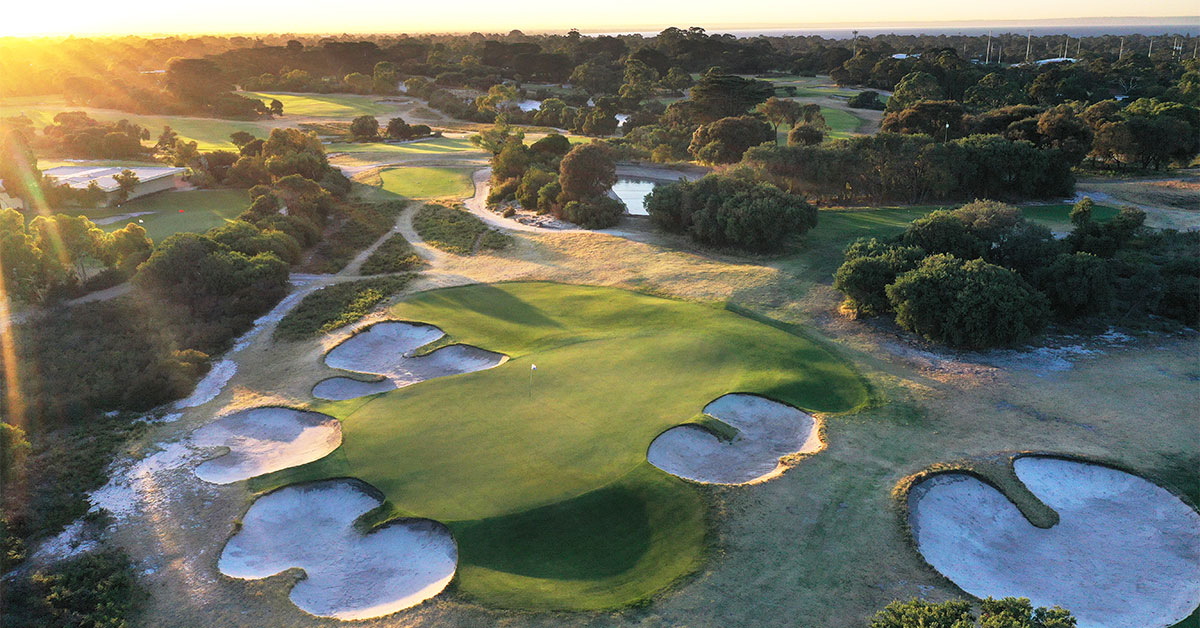
Barnbougle Dunes
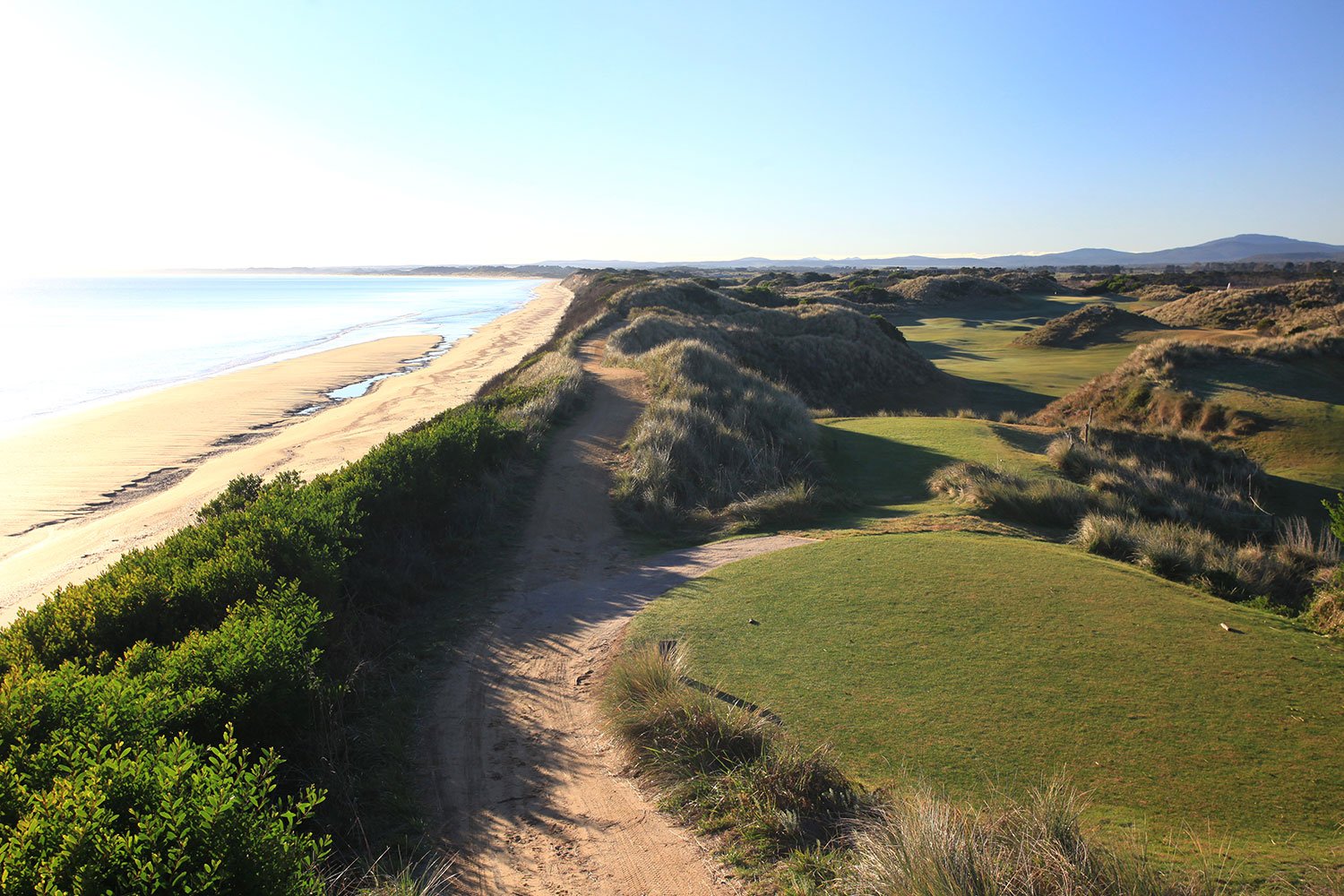
“The second most significant course in the country behind Royal Melbourne is Barnbougle,” insists Mike Clayton. He is the co-designer, of course, but anyone who knows Clayton understands his passion for golf courses transcends any design involvement. “For the first time ever, someone committed to building a top-50-in-the-world course that everyone could play.”
“It introduced the idea of destination golf that isn’t glitzy,” adds Crafter. “It was purist golf.”
Ratho Farm

Also in Tasmania, Ratho is the oldest golf course in Australia. Few sports pay homage to their history like golf does, so including our first golf course is appropriate. The bucolic layout at Bothwell near the island state’s centre oozes charm and sweeps golfers back to the 1800s.
Kingston Heath (and Kingswood)
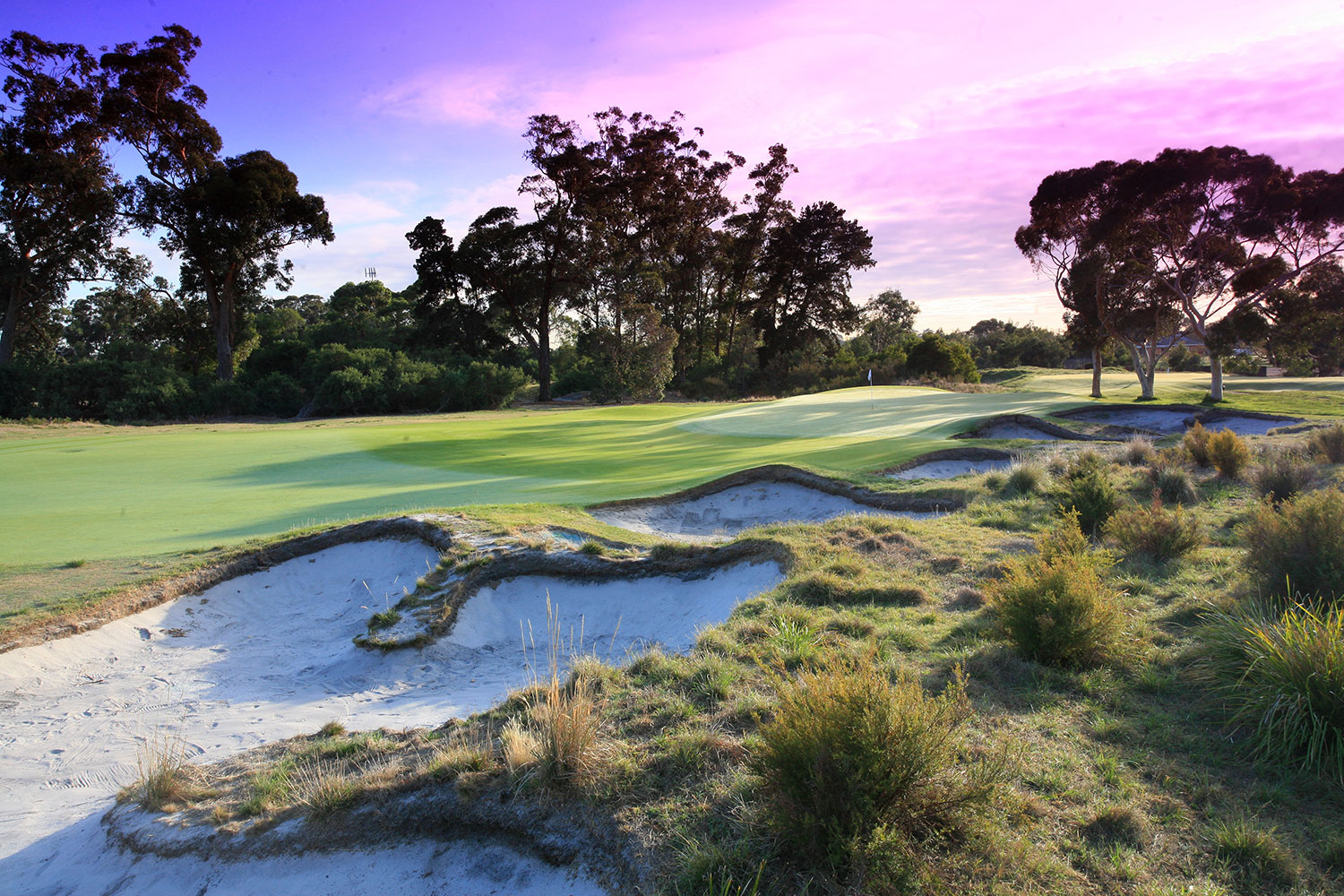
And when it comes to agronomy, Grant’s willingness to experiment at ‘The Heath’ coupled with dogged persistence proved instrumental in raising the standard of turfcare right across the Sandbelt.
“It started at Kingswood, in a way,” Grant recalls today of his time as course superintendent at Kingston Heath’s quasi-Sandbelt neighbour from 1974 until the early ’80s. “I’m always looking for the best possible surfaces to play golf on. I grew up playing at Long Island, caddied at Victoria and, as a kid, questioned why the couch in the fairways was good but only in certain areas.”
Those early observations spawned one of the most important careers intertwining turfcare and course architecture in Australia. Kingswood was home to one of the premier pennant teams in Melbourne at the time, and the club quite rightly wanted its course to be in the best condition possible. Grant, who learned his trade under Claude Crockford at Royal Melbourne, beginning in 1967, needed to develop couch in the fairways and was aided in a later discovery at RM of a species of maggot that was eating the tips of the couch and stunting its growth. His brother Bruce, who followed Graeme to Royal Melbourne, alerted him to it and once he saw it was causing the same trouble at Kingswood, set about controlling it.
That worked almost instantly but the healthier, more vibrant couch in summer still didn’t satisfy Grant. It did, however, help him in his transition to Kingston Heath in time for the 1983 Australian Open.
Observation of isolated patches of couch thriving in winter at Kingston Heath and Kingswood led him to believe that pure couch was possible in Melbourne. Once the Open was over, Grant was keen to pursue the concept and began trialing herbicides to remove the competition from cool-season grasses. By winter 1984, Kingston Heath became the only course in Melbourne with couch only in the fairways. With support for the concept from the Kingston Heath committee, Grant was able to refine the early results and, not being content with some of the common couch sub-species, move eventually to Santa Ana and Wintergreen. Both provided not only superior conditions in summer but, critically, also in winter.
“I decided these two varieties were the future,” Grant says, adding that with his brother Bruce at Victoria and partner John Spencer at Huntingdale embarking on the same program, he had the confidence and support to trial new things but still learn from the many mistakes. The approach became so successful that clubs across southern Australia began asking Grant and Spencer to consult to them.
“Royal Melbourne and Commonwealth were highly critical of what we were doing,” Grant wrote earlier this year of that crucial period. “They were adamant that the green colour they were used to in winter had to be maintained. It took 15-20 years, but eventually they could not deny what was so clearly evident and converted to pure couch. You could now, in 2020, count on one hand the courses not providing pure couch fairways in Victoria”.
Cape Schanck
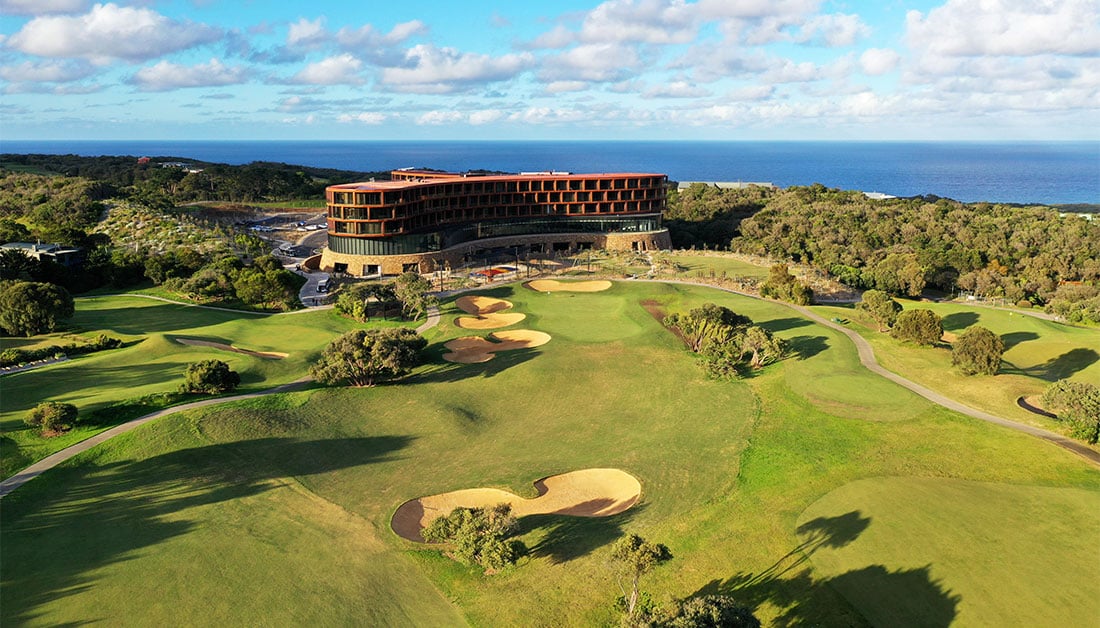
RACV Cape Schanck was the first course to bring public-access golf to Victoria’s Mornington Peninsula, and to the best part of the peninsula, land-wise. “Colin Campbell was the first guy who recognised the potential of the land on the Mornington Peninsula for great golf,” Clayton says. “Portsea was down there, Sorrento. And they were decent courses, but not on that ‘Cups’ land where St Andrews Beach and The National are, and The Dunes and Moonah Links. Colin Campbell went down and hand-built the original course at Cape Schanck and then he went and did The Dunes.”
The region would blossom into what is now considered the premier golf destination in Australia.
Alice Springs

The original desert course and one that showed golf was playable in all climatic regions of Australia. Across the nation are courses in alpine regions, rainforests, bush, coastal, rural and urban environments. Desert golf completed the set.
Healesville

Sanctuary Cove
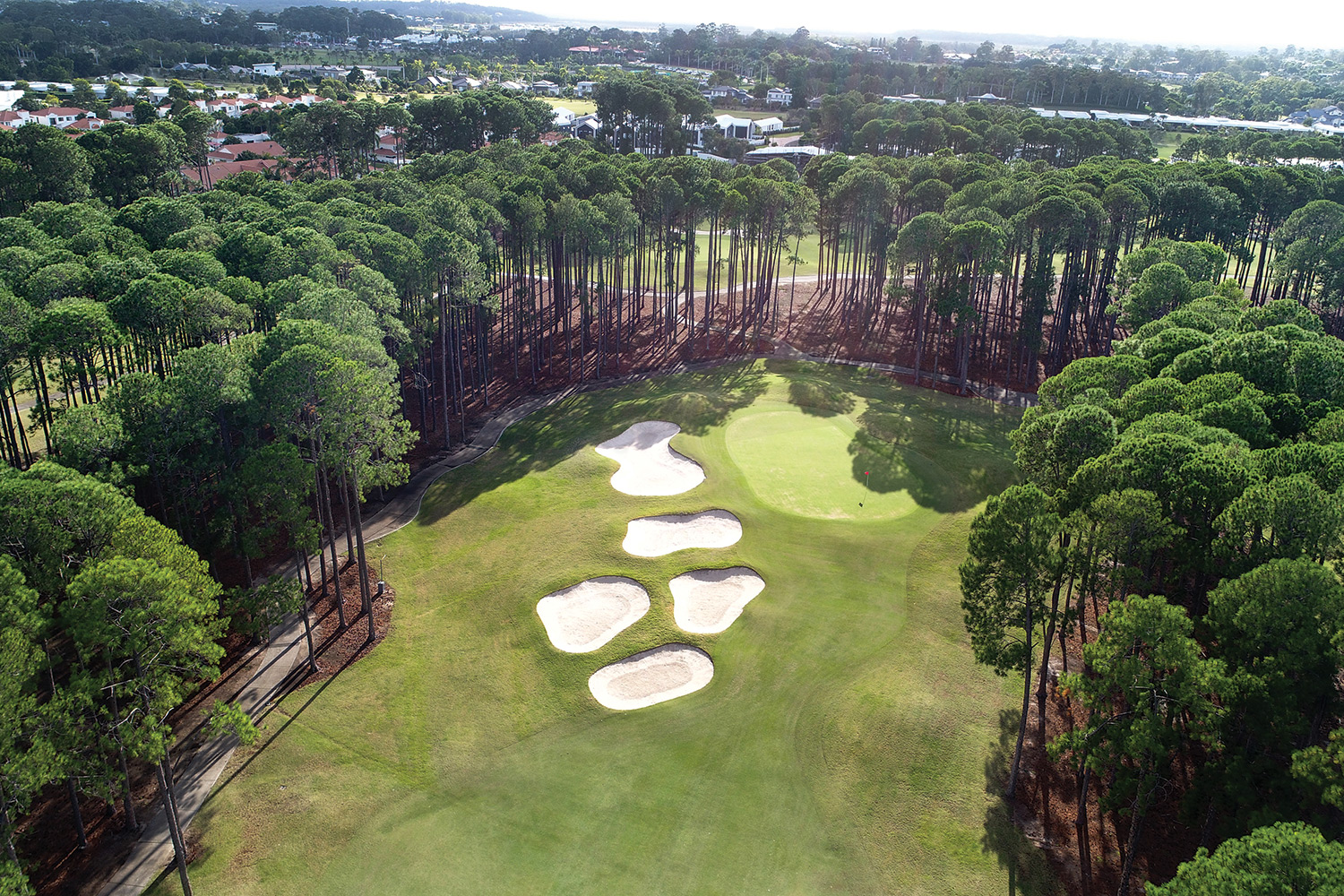
Widely acknowledged as the first Australian golf course to have real estate adjoining, giving rise to the concept of golf courses as selling tools. A nod also goes to another Gold Coast course to pioneer the idea: Gainsborough Greens. But it was the 36-hole Sanctuary Cove project, complete with hotel, marina, shopping precinct and more, that started the wave.
“Did it create great golf courses?” asks Crafter of the living-on-the-fairway fascination. “Probably no. But it took people to other parts of the country to play golf. People travelling for golf has been an ongoing component of golf in Australia.”
The National

“The creation of the first course at The National was a pretty significant event,” says Crafter.
• • •
A critic’s rant: Why the lack of innovation?
In the 53 years I’ve studied golf architecture, I’ve seen plenty of artistry, but almost no innovation. There is a difference. The former sells green fees, houses and portfolios. But only innovation can advance the craft. In the New Economy, the profession of golf design is in danger of going the way of slide-film developers, TV repairmen and travel agents.
The problem is, every architect worships the past – the 1920s or teens or even earlier – and moulds designs to those ancient templates. Nobody has an original thought. As Pete Dye said, every hole’s a copy of some other hole. There is no hip-hop, rap or even jazz in golf architecture; it’s all Stephen Foster and John Philip Sousa. Which means modern-day courses are gussied-up reproductions, with strategies conjured up by Old Tom Morris or Old Macdonald, bunkers styled after Alister MacKenzie or George Thomas, and greens patterned on relics like the Redan, Biarritz and Eden. In 150 years, nobody has been able to come up with a new concept for a green? If phone engineers thought like golf architects, our mobile phones would still be attached to the wall.
Don’t bother arguing that classic courses are ideal because the game hasn’t changed. Nonsense. Nothing in golf is the same as it was in the 1920s – not the clubs, the balls, the mowers, the turfgrass, the clubhouses or the fabric on our skin. Not the grip, the stance, the swing, the way we get yardages or transport our clubs. Nothing is the same, except our golf courses.
Architects embrace the past because it has been safe, marketable and easy to produce. (Mea culpa: I’ve done it myself.) Original ideas get men ridiculed, like Desmond Muirhead, who showed chutzpah in drawing inspiration from art, literature and Mother Nature but went off the deep end with fish bunkers and mermaid holes.
Instead of developing original golf holes to address 21st-century technology, time constraints and resource limitations, architects are preoccupied with decrying technology and clamouring for a rollback in ball distance. Sorry, folks, that’s called progress. The same complaints were made in the Golden Age, when steel replaced hickory shafts. It didn’t ruin the game back then, either. Concerned about pros making a mockery of your most beloved designs? Then lobby for a championship cup of smaller diameter; codification of a four-and-a-quarter-inch cup was a mere happenstance.
With so few courses under construction, architects need to reinvent their product. They talk of designing risk and reward, but they’re unwilling to risk new ideas because they don’t see any reward. Would finding work be reward enough? If the past is the only thing you bring to the drawing table, sooner or later clients will decide to eliminate the middleman. In Nebraska, a prominent golf contractor built a money-making public course without any help from an architect. In California, Cypress Point, armed with a pile of old photos, restored its MacKenzie bunkers with no involvement by an architect.
Need an upside to dreaming of a new world for golf courses? Restoring the relevance of the profession of golf architecture should be motivation enough.
– Ron Whitten

